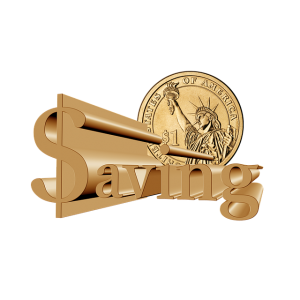Building a budget or a spending plan is tough. Sticking to the plan is even tougher. Thankfully, there are a few strategies designed to help you develop positive habits. These strategies will help you learn to save, stick with your budget, plan for emergencies, and control your impulse spending.
Budgeting Strategies
Budgeting strategies refer to different ways to approach the task of budgeting in order to build something that works for you. There is no “one size fits all” budget. Every person has different wants and needs, so your budget needs to honestly reflect what is important in your life. Otherwise it is doomed to fail.
Start with a Clear Goal

Budgets and spending plans are living documents. This means they should be updated every couple of months. Before you sit down to create your first plan or sit down to revise a current one, you need to have very specific goals in mind about what you want to achieve.
A good goal would be something like “I want to save $100 extra each month”, or “I want to rent a bigger apartment which costs $50 more than my current one, but I do not want to reduce my savings”. An ineffective goal would be “I want to increase my savings”, or “How expensive of an apartment can I afford?”. Setting clear, specific goals will help you actually reach them.
Think about the difference between “I will save $100 every month” and “I will save as much as I can every month”. Building a budget or spending plan around saving $100 every month is a, easier problem. Just increase the amount of your savings. Then reshuffle your other expenses to see if you can make it work. If your goal is to save as much as you can, you will mostly likely cut spending from random areas, $10 on food, $5 on gas, and $25 on leisure activities. The amount you “think” you can save might be $100 but putting this plan into practice is much harder since it requires you to give up more from different areas.
Pay Yourself First
Budgets are easier to stick to when you follow a pay-yourself-first savings strategy. With pay yourself first, savings are taken out of your paycheck as an automatic transfer to your savings account before the money even enters your budget. If you can schedule these automatic transfers to occur on the day after you get paid, savings do not even need to appear as an item in your budget to be dealt with. The amount has already been deducted from your available income before you start.
This makes building a budget easier because there is no stress each month to hit your savings goal. If you decided to save a little more, your new goal would simply reflect saving $20 more each month, for example, and it could be achieved by adding a few extra dollars to each automatic transfers.
Divide Savings and Emergency Cash

All savings are not created equal! Ideally, you will almost never make a withdraw from your savings account unless you are using it to invest. In the real world, you will need access to money for those emergencies that inevitably happen. You don’t want those emergencies to break your budget for the month. Instead you need to save money for those events.
To keep your savings secure, it is a good idea to have a separate savings account or to keep a stash of “emergency cash” in your checking account that you only touch when you have an emergency expense. When you are first establishing this fund, try to build it up to equal one month’s salary. Then work to build it up to 3 months’ worth. That way whenever you have a financial emergency, you just dip into your emergency cash fund instead of withdrawing money from your savings. Then just replenish your emergency cash in the next months. This strategy allows you to plan for emergencies while allowing your savings to continue growing.
Spending Strategies
Using a budgeting strategy is a great way to help boost your savings, but most people need assistance in finding ways to control their spending. If you are having trouble keeping your spending under control, consider these proven ways to keep cash in your pocket.
Keep Credit Cards at Home
If you struggle with credit card debt, your best move might simply be removing your credit cards from your wallet and putting them in a secure place at home. This limits your purchases to cash or debit, and if you don’t have the money, you won’t be able to buy. This strategy will also help you avoid some of the shock when your credit card statement arrives.
Opt Out of Overdraft
Overdrafting is when your bank will let you spend more money that what is currently in your checking account. Banks offer this service to make sure your checks for bills do not bounce if you are a few dollars short. This service is not free. Every time you overdraft, most banks charge both a dollar amount (usually about $25) and a percentage of your transaction cost.
Even though this feature seems like a nice gesture from your bank, you could easily get yourself in financial trouble. If you have a low balance in your checking account and need to make a few small purchases, every one of them could rack up a $25 penalty, with no warning it is happening. If your checking account is regularly low at the end of each month, this penalty can be devastating. You can opt out of overdraft at any bank, which means your debit card will simply be declined if you try to make a purchase without sufficient funds in your account. This could cause a temporary embarrassment while shopping, but your finances will thank you later.
Never Order Anything Same Day

With the rise of e-commerce sites like eBay and Amazon, it is easier than ever to buy things you do not need. If you find yourself receiving packages you can barely remember ordering, it might be time to stop placing impulse orders. One-click ordering options make it very easy to buy something you don’t really need.
Instead of buying something when you first find it, add it to your wish list and then wait a week to actually place the order. This has two advantages:
- You will look back later and just remove most impulse purchases.
- Retailers tend to email special offers and lower prices on products in your wish list. .
This strategy helps reducing spending you will later regret, and you may get better deals on the items you do end up buying.
Cost Cutting
Watch this great video from Bank of America showing how to make small cuts each day, adding up to huge savings each year.
If All Else Fails, Use Prepaid Debit Cards Only
If you’ve tried these strategies and continue struggling to put a cap on your spending each month, there is one fool-proof way to go. Leave all of your credit cards and debit cards locked up in a secure spot at home. Set up automatic bill pay and savings transfers for your monthly obligations. Once all of those items have been taken care of, take your remaining money and add it to a pre-paid debit card.
Now just use your prepaid card for all purchases, both online and off, and keep this card as the only one in your wallet. You can even get cards for specific purchases, such as one just for groceries, and one for gas, and one for leisure activities. This helps you put extremely strict spending limits on yourself, making sure you absolutely stick to your budget. And as you do this, you are building positive financial habits by learning to control spending.

Get PersonalFinanceLab
This lesson is part of the PersonalFinanceLab curriculum library. Schools with a PersonalFinanceLab.com site license can get this lesson, plus our full library of 300 others, along with our budgeting game, stock game, and automatically-graded assessments for their classroom - complete with LMS integration and rostering support!
Learn More[qsm quiz=149]
Challenge Questions
- Why is it important to have an idea of how much you receive and spend each month?
- How might paying yourself first (saving first before spending) help your cashflow and budget?
- What are the advantages and disadvantages of having an overdraft?
- It has been said that to have more money, you need to go out and earn more, or cut costs. Which would you prefer to do and why?
- What is the opportunity of working more hours?
- Is it possible to relate value of money to time spent working?

 Teacher Introduction Webinars
Teacher Introduction Webinars This Way to a Home of Your Own—5 Stages of the Home Buying Process
This Way to a Home of Your Own—5 Stages of the Home Buying Process Credit Card Payment Calculator
Credit Card Payment Calculator